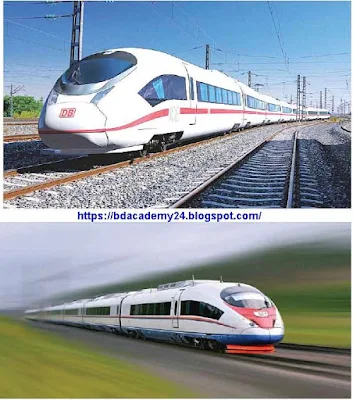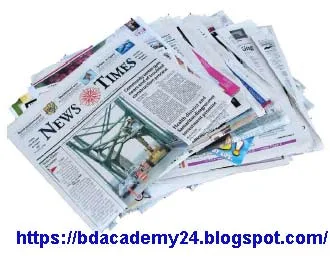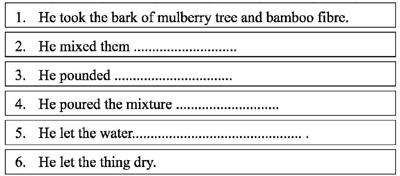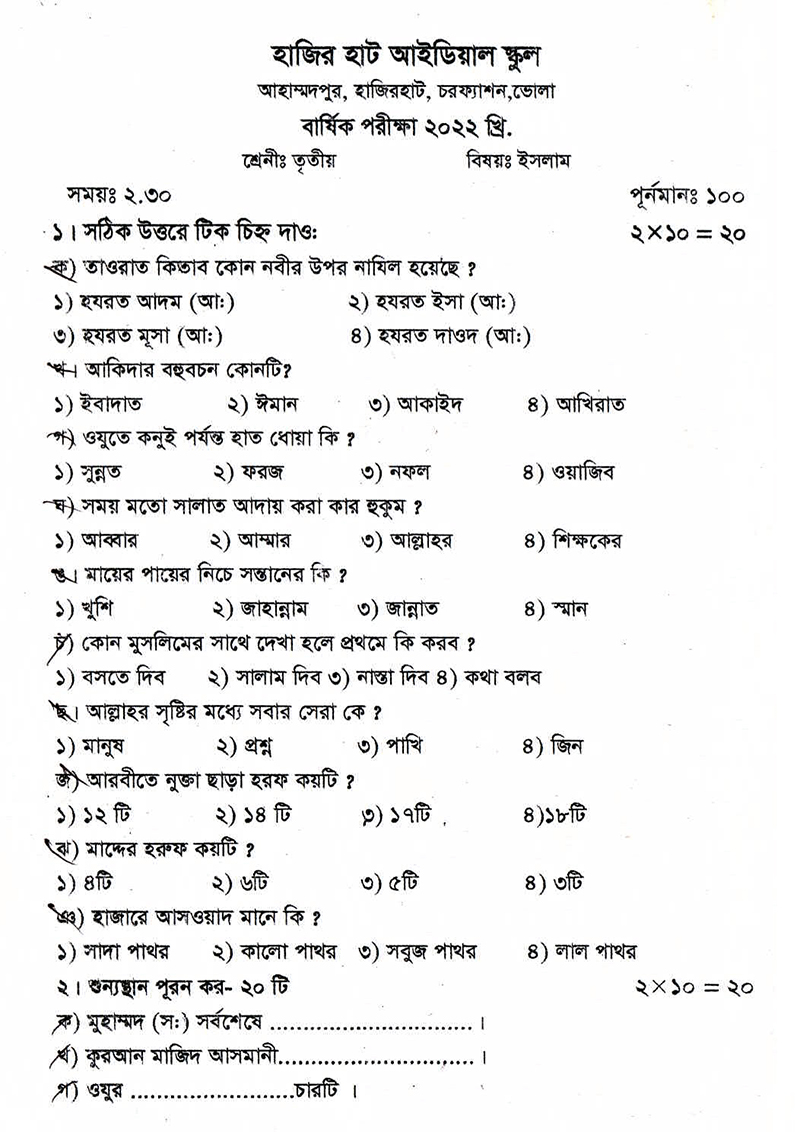Unit Nine :Things that have changed our life
Unit Nine
Things
that have changed our life
Learning outcomes
After we have studied this unit, we will be able to...
• ask and answer questions.
• participate in short dialogues and conversations on familiar topics.
• read aloud texts with proper sounds, stress and intonation.
• read and understand text materials.
• write answers to questions.
• write short paragraphs.
• ask and answer questions.
• participate in short dialogues and conversations on familiar topics.
• read aloud texts with proper sounds, stress and intonation.
• read and understand text materials.
• write answers to questions.
• write short paragraphs.
Lesson:
1 | The wheel
Key
words: circular rotate axis propeller turbine mobility
journey (v) vehicle invention civilisation
A.
Look at the pictures and say which one is easier to move and why.
B.
Read the text and answer the following questions.
Human
beings have invented many important things so far. They have brought great
civilization to the world through these inventions. Do you know which invention
is the greatest? It is 'the wheel'.
A
wheel is a circular object. It can rotate around its axis and help easy
movement of things across a surface.
The
wheels are, in fact, everywhere. They are on our cars, trains, planes, wagons
and so on. Besides, they are on most factory and farm equipment. Fans,
propellers, turbines are also other types of wheels.
So
the wheel is very important. We cannot imagine modern life without wheels. But
do we know exactly who made the first wheel?
Questions
1
What is a wheel?
2
What can a wheel do?
3
Where can you find wheels?
C.
Fill in the blanks with appropriate words from the box. There are more words
than necessary.
difficult
much circular important heavy first
Although
the wheel is a very (a)---------- invention, the history of its origin is
unknown. Experts guess that the first wheel was developed from a circular
object. The early man observed that a huge piece of stone could be rolled
easily if it was (b)---------- in shape. Similarly, a heavy tree-trunk is
(c)---------- to carry; but it can be rolled away with less effort. Even, a
gigantic tree-trunk can be moved easily using other small and round trunks as
rollers under it. Thus, early man took advantage of rolling objects and
developed the (d)---------- wheel. Apart from its mechanical advantage, a
wheel's mobility has contributed (e)---------- to the civilisation.
D.
Make as many correct sentences as you can using the substitution table. In the
third column there are more items than necessary.
E. Have you ever travelled by bus or car? Do you have any
experience of what happens if one wheel falls flat. If yes, give a description
of your experience. If no, imagine such a situation, and write a paragraph on
it.
Lesson: 2 | The history of the wheel
Key
words: invent valley ancient further pioneer warfare
B.
Read the following dialogue between the English teacher, Mr Ramis and a student
Rubina.
Mr
Ramis : You know that the invention of the wheel has helped to create
a
new civilisation. But do you know who first used wheels?
Rubina
: No teacher. But I guess it may be the Greeks.
Mr
Ramis : The Greeks were pioneers in many things. But in this case,
however,
the Mesopotamians were the first. The oldest ever wheel was discovered in
Mesopotamia. It was in 3,500 B.C.
Rubina
: Where is Mesopotemia?
Mr
Ramis : Well, Mesopotamia was in ancient Iraq. It was along the valley of the
rivers Tigris and Euphrates. After the Mesopotamians, the wheel was further
improved by the Egyptians. They first made wheels with spokes. Then they used
them on chariots around 2000 BC.
Rubina
: So the wheel travelled to Egypt from Mesopotamia?
Mr
Ramis : Exactly. But it travelled eastwards too. Wheels reached the Indus
valley by 3000 B.C. But chariots with spoked wheels were made in ancient India
in around 1500 B.C. They were used for war, hunting and racing.
Rubina
: What about the Greeks,teacher? Didn't they use wheels?
Mr
Ramis : They definitely did. In 1500 BC, the Greeks too leamt the idea of
wheel-making from the Egyptians. They also made further improvements on it.
Later, the Romans did the same too and produced a variety of wheeled vehicles.
C.
Read the statements below and say whether they are true or false. If false,
give the right answer.
1
The Greeks were the pioneers in developing spoked-wheels.
2
The earliest wheel was discovered in 2000 B.C.
3
The Egyptians first used wheels on chariots.
4
The Romans first used wheeled chariots for warfare.
5
The ancient Indians used wheels before the ancient Romans did
D.
Look at the following map of ancient river-valley civilisations and discuss
their locations in the map with your partner.
E.
Listen to the teacher/CD carefully and complete the following sentences with
appropriate words.
U9, L2 E
Listening text: 10
1
Shang China lies ------ the far east of India.
2
The Indus and Ganges valley is ------ the middle.
3
The Tigris and Euphrates valley lies ------ the Nile and the Indus-Ganges.
4
The Ganges flows ------ the north of India.
5
The Bay of Bengal is ------ the east coast of India.
F.
Discuss in pairs and make as many 6wh' questions as you can from the given
answers below. First one is done for you.
1
i) Where does Mesopotamia lie?
ii)
Which countries does Mesopotamia lie between?
Ans.
Mesopotamia lies between India and Egypt.
2
.................?
Ans.
The Caspian Sea is on the north of Mesopotamia.
3
.................?
Ans.
The Nile falls into the Mediterranean Sea.
4
.................?
Ans.
The river Yangzi lies to the east of India.
5
.................?
Ans.
The Tigris and Euphrates run on the west of Mesopotamia.
G.
Write a paragraph on the history of the wheel. Take your cues from the dialogue
in section B.
Key
words: high-speed record-breaking network expand
conventional unconventional magnetic trainset
B. Read the text and answer
the following questions.
The TGV
The TGV (Train
a Grande Vitesse, meaning high-speed train) is France's high -speed rail
service.
It started in the 1970s.
Originally, it was powered by gas turbines. But in 1973, the TGV was changed
into electric trains. The TGV service first started between Paris and Lyon in
1981. Later, the network connected other cities in France with Paris.
A TGV test train set the
world record for the fastest conventional wheeled train on 3 April 2007. It
reached the speed of 574.8 km/h (357.2 m/h) on the test run. But the regular
TGV trains operate at the highest speed of 320 km/h (200 m/h). It is the
present world record of speed of a conventional commercial train.
The Bullet Train
The Bullet Train is the
network of high-speed train service in Japan. It started operation in 1964 on a
limited route. But at present, most major cities of Japan come under the
network.
The Bullet Train runs at a
maximum speed of 300 km/h (186 m/h). It plans to increase speed up to 320 km/h
(200 mph). In 2003, Japan set the world record for unconventional magnetic
trainsets. In a test run, the speed was 581 km/h (361 mph). But it is not yet
in regular commercial operation.
The High-speed Rail
The High-speed Rail service
in China started operation on April 18, 2007. Currently China has started
building a high-speed passenger rail network. It will be similar to French TGV
or Japanese Bullet Trains. The usual top speed of China's conventional quick
trains is 300 km/h (186 mph).
Recently China has set the
world record of a speed of 487.3 km/h (303 mph). In 2011, this record was set
by an unconventional magnetic trainset called the "Harmony Express".
This is the highest speed of an unconventional magnetic trainset in regular
commercial operation.
C. Read the above text in
section B again. Now discuss with your partner to fill in the blank slots in
the following grid with the information about high-speed trains.
D. Discuss in groups to
decide which of the above three rail services you like best and why. Finally write a paragraph and present it in the Class.
E. Pair work. Read the basic information
about Bangladesh Railway below. Share with your partner and write a composition
using the information.
Name: Bangladesh
Railway
• Headquarters: Dhaka
• Zones: Eastern and Western
• Numbers of stations: 459; number of
engines: 284; number of passenger carriages: 1,245; number of wagons:
1,2948
• Total length of railroad: 2,855 kilometres;
passengers transported annually: 42 million; total number of employees: 34,168
•
Nature of present operations: international (Dhaka-Kolkata); inter-city; local
F.
Work in pair. Imagine your partner is a railway official and you are a
reporter. You asked questions and the official gave the above information
(section E) in answers. Discuss and write what the questions might be.
For
example:
1
What is the official name of our rail service?
2
Where is the headquarters of Bangladesh Railway?
Now
continue...
1
.........................?
2
.........................?
3
.........................?
4
.........................?
5
.........................?
6
.........................?
Lesson: 4 | Taking off
Key
words: endeavor supersonic speed
revolution aviation ads website neither ground
(v) sky's the limit
B.
Read the text and answer the following questions.
Human
beings conquered the distance on earth by discovering wheels. They endeavored
further. Then on December 17, 1903, the Wright brothers in America made the
first experiment of flying in a plane. In the experiment, a machine carried a
man and rose above by its own power. The machine was called 'aka airplane'. It
flew naturally in a smooth speed, and finally landed without damage. That was
human being's first real take-off. And now, they have got a supersonic speed.
In a supersonic speed, something travels faster than sound! So the sky s the
limit now!
Modern
aircraft companies are making revolutions in aviation technology. Boeing as
well as Airbus is producing modem passenger airplanes. These planes fly very
fast. Boeing 787 flies 950 km/h. However, Airbus 350 is expected to fly in a
couple of years. Its speed will be 945 km/h.
You find attractive ads on the websites of both Boeing and
Airbus planes. Both have excellent features. But in speed, neither could beat
the Concorde. It
is the
world's fastest supersonic passenger aircraft. Its normal speed was
2,170 km/h. The Concorde was a joint project by France and Britain. It started
passenger flight in 1976. Unfortunately, the Concorde fleet was grounded
forever in 2003 after a major accident.
Questions
1
Who made the first successful experiment in flying an airplane?
2
What was the first flying machine called?
3
What do you mean by 'supersonic'?
4
What was world's fastest passenger airplane?
5
When was Concorde fleet finally grounded?
6
When is Airbus 350 expected to take off?
Note: The
speed of sound, which is approximately 760 miles per hour is called 1 Mach. An
airplane flying less than 1 Mach or less than 760 miles per hour is travelling
at subsonic speed. Faster than 1 Mach or 760 miles per hour would be a
supersonic speed.
D.
Read the dialogue between the English teacher Mr Ramis and Sohan. Then do the
following exercise:
Sohan
: Teacher, in the last class we read about modern aircraft. There were Boeing
787s, Airbus 350s, Concorde and so on. But which one is the best? Which one can
we buy for our Biman Bangladesh Airlines?
Mr
Ramis : A difficult question. There are certain things to consider. If you
think of speed, Concorde flies the fastest. To many, it looks the most beautiful.
But it's no more in operation.
Sohan
: Between the other two aircraft?
Mr
Ramis : Well, if you remember, Boeing 787 travels 950 km/h. So you see, it's
not as fast as Concorde. But it's faster than Airbus 350.
Sohan
: Yes teacher. I remember Airbus 350 travels 945 km/h. It's 5 km shorter than
Boeing 787.
Mr
Ramis : Nice calculation! But there are other factors too. Say, passenger
capacity, production cost and many more. Airbus 380 now is the largest and can
carry more passengers than any other aircraft. Authorities have to consider so
many...
Sohan
: Yes teacher. I understand.
Complete
these statements using the correct form of words in the brackets.
1
Airbus 350 is a bit........(slow) than Boeing 787.
2
Concorde flew the........(fast) among all passenger aircrafts.
3
Even sound cannot travel as........(fast) as Concord.
4
In supersonic speeds, Concorde flies Boeing.........(high) in the sky than
Boeing.
5
To many, Concorde looks........ (beautiful) than other passenger aircrafts.
6
Airbus A380 is the........ (large) passenger aircraft in the world now.
7
Airbus A380 can carry........ (many) passengers than Boeing 787.
E.
Project Work: Work in groups. Suppose, your teacher will buy a mobile hand set.
Visit in pairs a nearby mobile phone shop. Make a list of different models of
handset with their price and other features. Then discuss with your partner to
compare and decide which one will be the best handset and why. Share your
findings with other groups.
Lesson: 5 | Future aircraft
Key
words: withstand space base launch detach monitor
hypersonic research melting point
A.
Look at the pictures and say what they are. Discuss with your partner.
B. Read the news report adapted from the Guardian.
The
Falcon Hyper-sonic Technology Vehicle-2 (Falcon HTV-2) is the fastest plane
ever built by human beings. It would fly from London to Sydney in less than an
hour. Supersonic Concorde, by the way, could not fly at such a great speed. At
the same time it would withstand temperatures of almost 2,000 degree C. This
temperature is hotter than the melting point of steel.
The
US Defense Agency will launch the Falcon HTV-2. First, they will set it on the
back of a rocket. Then they will launch both into the space from an Air Force
Base. The plan goes like this: engineers will launch the Falcon HTV-2 into the
space on the back of a rocket; then they will detach the plane from the rocket;
the plane Falcon will fly towards the Earth; engineers will guide and monitor
it in its flight. The plane would fly at hypersonic speed of 13,000 mp/h. This
speed is about 20 times the speed of sound.
The
Falcon was born in 2003. It was born as part of a US military project. The
project
researched and built a special type of plane. The researchers wanted
that
the plane could reach any part of the world in less than an hour. They also
wanted
to use it for any purposes, military or civil. The plane was already tested in
computer models.
The
Falcon Hypersonic Technology Vehicle-2 would be mankind's dream aircraft in the
days to come.
Questions
1
What is HTV-2?
2
What is the speed of HTV-2?
3
Describe the steps of HTV-2 test flight.
4
Why was the HTV-2 developed?
5
Do you think that HTV-2 will be 'mankind's dream aircraft'? Why do you think
so?
C.
Imagine you are a TV reporter. You have come to interview the chief engineer of
the HTV-2 Launch Project. What questions will you ask him/her? Design a short
dialogue between yourself and the engineer, and write it. Finally act it out in
pairs with proper sounds, stress and intonation.
D.
Listen to the teacher/CD carefully and complete the following sentences with
appropriate words.
U9, L5 D
Listening text: 11
1
Thursday's flight will test another---------- of the aircraft.
2
The plane is made of---------- composite materials.
3
The plane will fly at---------- speed.
4
In the flight, the body---------- of the plane could reach 2,000 degree
Celsius.
5
---------- will melt at 2000 degree Celsius.
E.
The following passage is based on the information in section B. Read the text
in B again. Discuss in pairs and complete the following sentences with
will/would, can/could/could not.
Even
Concorde ---------- fly as fast as Falcon HTV-2. The news report says: the US
Defense Agency ---------- launch the Falcon Hyper-sonic Technology Vehicle-2
into space. Scientists expect that the Falcon HTV-2 ---------- fly at 13,000
miles per hour. The US military wishes that the Falcon ---------- bomb any part
of the world in less than an hour in the future. Engineers plan that they ----------
set the Falcon on the back of a rocket to launch it into the distant space.
F.
Have you ever dreamt of flying to a city/country of your choice? If yes, write
about your dream. If not, try to imagine you are flying to that place in a
plane. Write about your experience and expectations.
If
you fly westward in a supersonic plane such as Concorde, you will land several
hours before you took off. Can you explain how?
Lesson: 6 | Paper has advanced our life
Key
words: record paper surface of
stone bark encyclopedia wood plunk digital
B.
Read the text and answer the following questions.
Communication
of ideas is at the centre of civilisation. It needs written records. Most of
our records in the modern age are on paper. Though writing was invented very
early, paper is a more modern invention.
For
long in history, people exchanged ideas through speaking and listening. Then
there came the art of writing. But to record thoughts in writing was difficult.
Writing materials were not available. People used the surface of stone, metal,
wood, bark, leaves, etc. for writing. Those things were not easy to carry. Then
for ages, people looked for easy writing materials. Finally, Paper was invented
in China in 105 AD.
Before
the paper age, knowledge was very restricted. Can you think of that time? There
were very few books in the world. Maybe, they were written on stone or on heavy
wood plunks or on metal sheets. Suppose, one page was a heavy stone block. So
think of a hundred-page book! In our age, you can carry the entire world of
knowledge in digital form in your laptop bag. You can even carry a huge volume
of paper encyclopedia. But who could produce and carry tons of heavy stone
books and documents in those paperless days? In fact, paper has made
publication and the spread of knowledge and information easy. So you can see
how paper has changed our life.
Questions:
1
How did people exchange ideas before writing was invented?
2
Why did people look for easy writing materials?
3
Why was knowledge very restricted in the pre-paper age?
4
Do you think paper has changed our life? Explain why your answer is 'yes' or
'no'.
5
Where was paper invented and when?
C.
Discuss with your partner and make a list of things other than paper on which
we can write in pens, pencils, markers, brushes, paint/pastels etc.
D.
Listen to the teacher/CD carefully and complete the following sentences.
I U9,L6D
Listening text: 12
1
The person who invented paper is a ---------- man.
2
He took the bark of a mulberry tree and ---------- fibres.
3
This knowledge of ---------- was first used in China.
4
The word 'paper' is not ---------- .
5
The word 'paper' was derived from a kind of Egyptian plant called
---------- .
E.
Look at the following boxes first. Listen to the teacher/CD again. Then write
in the boxes the series of works Ts'ai Lun' did in making paper. First one and the
last one are done for you.
F. PROJECT WORK: On a
weekend, observe how ruti or paratah is made in the kitchen. Carefully take
notes of each step taken to make it. Then back in class, share your notes with
your partner/group. Finally write how ruti orparatah is made and make a
presentation in the class.
Lesson: 7 | Contemplation
A.
Look at the picture and discuss in groups these questions:
1
Why is the boy up in the tree?
2
What is he looking at?
3
Guess what he is thinking about.
B.
Read the poem and answer the above questions.
Contemplation
For days and days I've
climbed a tree
A dappled yellow
tree
And gazed abroad at many
things
I've always wished to
see.
I see the green and
gentle fields
All bounded in with
hedge
And shining rivers
swimming through
The rushes on the
edge,
And little sheep who
play all day
I watch them as they
run,
While far away the roofs
of town
Are shining in the sun.
I think it's very nice
to sit
So high and look so
far—
How very large the world
can be!
How many things there
are!
John Carpenter
Note
dappled yellow tree - spotted yellow tree (the leaves may
be yellow)
gazed abroad - looked around
bounded - surrounded
hedge - a thick row of bushes
swimming through - (the river like a person is swimming
through) flowing through
rushes - tall plants that grow on the river's edge
C. Ask and answer these questions.
1 Where do you think the tree was?
2 What were the four things the poet could
see from the tree?
3 Have you ever climbed a tree? If yes, what
did you do it for? If not, why?


























SAP PS Training In Noida
ReplyDelete